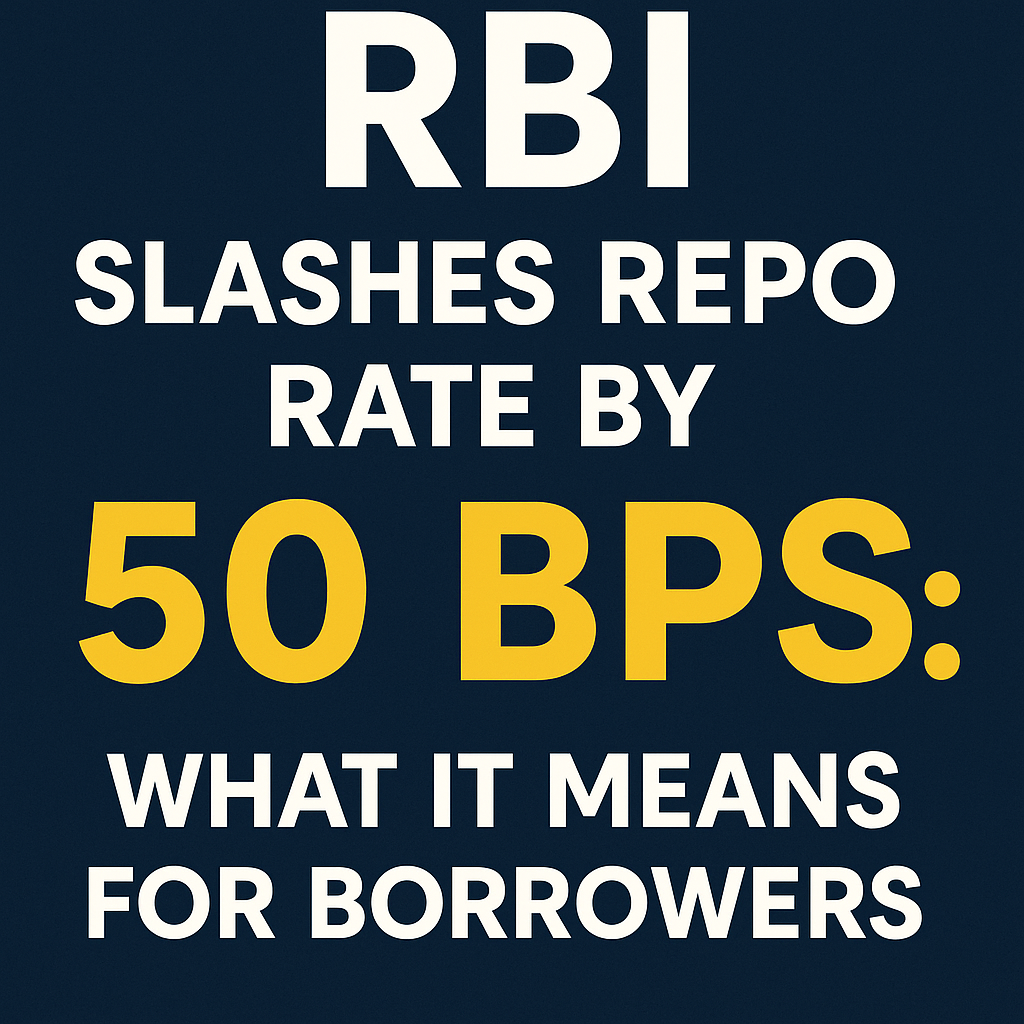The Reserve Bank of India (RBI) has made a bold move by cutting the repo rate by 50 basis points (bps) — bringing it down to 6.00%. This may mark a positive shift for individuals taking out home loans and personal loans, since they could pay less each month and find the loans easier to handle.
Here, we go through the reasons behind the rate cut, its implications on different borrowers, and what you should do after.
What Is the Repo Rate and Why It Matters
It is at the repo rate that the RBI lends money to commercial banks. Both inflation and economic growth can be managed and boosted with its help.
When the repo rate drops:
• Borrowing becomes cheaper for banks.
• Lower interest rates may be offered to customers by banks.
• Loan EMIs can decrease, especially for floating-rate loans.
Why Did RBI Cut the Repo Rate?
RBI’s monetary policy committee (MPC) cited slowing economic growth, moderating inflation, and the need to boost consumer demand as the key reasons behind the rate cut.
📉 Key economic indicators influencing the decision:
• Retail inflation (CPI) eased to 4.2%, within the RBI’s comfort zone.
• The expected growth rate in GDP has gone down from 7.2% to 6.5%.
Industries are now producing less, and consumers are spending less money as well.
How Borrowers Will Benefit
Those who win most from the cut are people with floating interest rate loans, mainly those who:
🏠 Home Loans
• repo rates determine the changes in floating rate home loans.
• How much EMI drops after a 50 bps cut depends on the chosen loan period and the relevant bank charges.
Example:
If you change your loan to 20 years instead of 15, your EMI will decrease from ₹44,986 to about ₹43,391 and you will save approximately ₹1,600 each month.
🚗 Auto and Personal Loans
While you are likely to get fixed-rate loans, banks will probably offer more appealing markets after a rate reduction.
Eligible current borrowers will not notice an advantage right away, but refinancing might work for them.
What Should Borrowers Do Now?
This is how you can use the repo rate cut to your benefit.
✅ Check With Your Bank
Question your lender whether they are following the repo rate cut or not.
• If not, consider switching to a more responsive bank under RLLR (Repo Linked Lending Rate) based products.
✅ Consider Prepayment
• Lower interest rates make prepayment more attractive.
• With the savings you get in EMI, try to pay back the loan faster and lower the interest overall.
✅ Negotiate Better Terms
• Talk to your bank and try to get a better loan rate since you are being offered a cut in the interest rate.
Expert Insights and Real-World Perspective
🗣️ Sanjay Mehta, Housing Loan Consultant:
RBI wants to see more demand for housing and other services with its move. The banks SBI and HDFC have already cut their interest rates by 35-45 basis points. Smart borrowers should actively seek out better deals.”
📌 Case Study:
After the RBI reduced interest rates, Pune settles with Priya Sharma, who had applied for home loan for the first time. She received lower EMI every month — letting her save almost ₹2.6 lakhs across the period of the loan.
Will All Banks Pass on the Benefit?
Not necessarily.
⚠️ Things to keep in mind:
• Private banks may delay or pass partial benefits.
• NBFCs and smaller banks could have higher spreads.
• Loans linked to MCLR (Marginal Cost of Funds Based Lending Rate) may take longer to adjust.
🔍 Tip:
Prefer loans linked directly to the repo rate (RLLR) for quicker transmission of rate cuts.
Conclusion: Make the Most of Falling Interest Rates
By reducing the interest rate by 0.5%, the RBI wants to support growth and cut down on the expenses faced by consumers. This could be the perfect moment for borrowers to re-examine how they take loans, discuss new conditions with lenders, or find better ways to pay their debt.
✔ Key Takeaways:
• Floating-rate borrowers stand to benefit the most.
How fast banks give the rate cut to borrowers is important for EMI reduction.
• Proactive steps can help you maximize savings.
Follow market trends and act responsibly so you gain from a repo rate drop.
